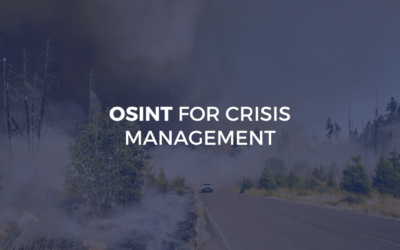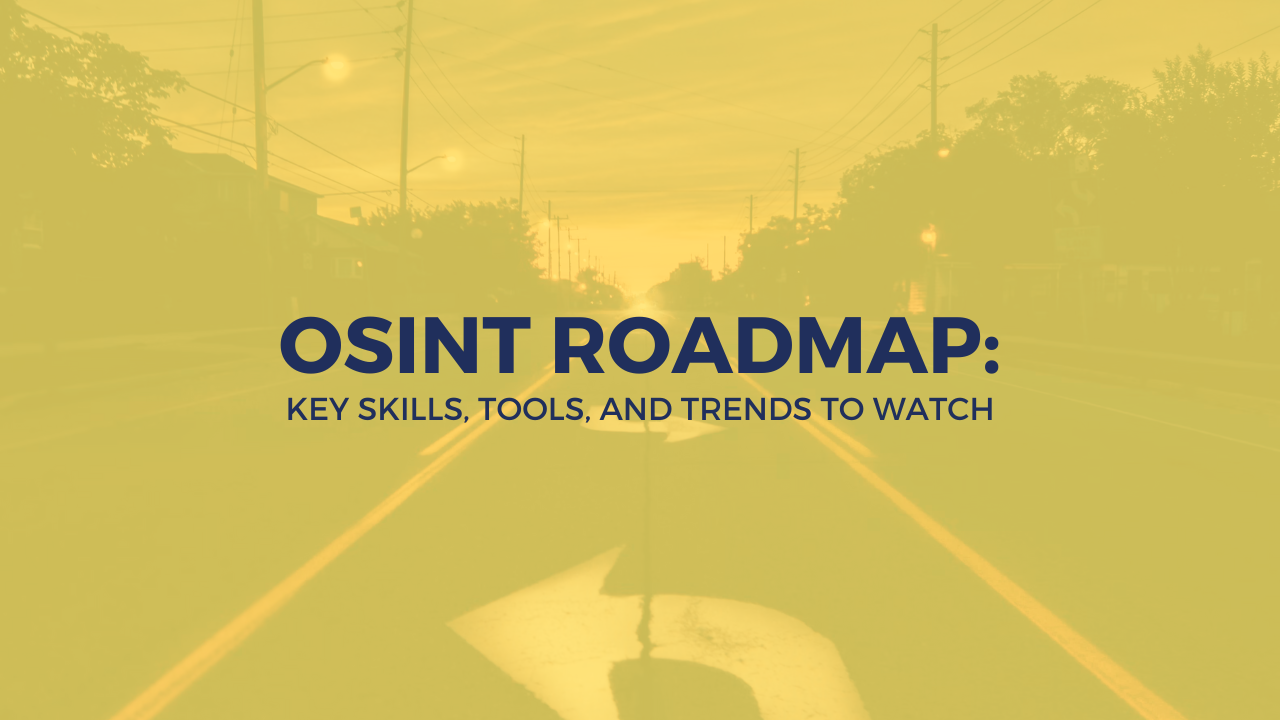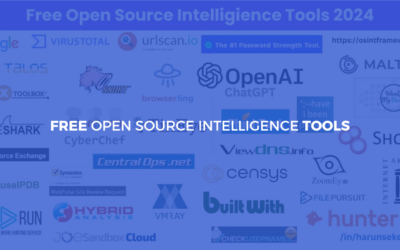As an investigative journalist, uncovering hidden truths and reporting them with accuracy and objectivity is a crucial responsibility. To navigate the challenges of modern journalism, leveraging every tool at your disposal is essential—and one of the most powerful resources available today is Open Source Intelligence (OSINT).
OSINT is the process of gathering information from publicly available sources, such as social media, websites, government records, and news articles. For investigative journalists, OSINT offers a fast, efficient, and reliable way to gather insights, verify facts, and piece together complex stories that might otherwise remain hidden.
In this article, I’ll explore the benefits of OSINT for investigative journalism, share practical techniques that can strengthen your reporting, and highlight ethical considerations that should guide your work.
Why OSINT is Critical for Investigative Journalism
Investigative journalism requires a multi-faceted approach to uncovering information, and OSINT has become an indispensable part of the modern journalist’s toolkit. Here’s why OSINT matters so much:
Comprehensive Coverage: OSINT draws from diverse sources—social media, government databases, court records, news archives, and more—offering a broad view of events and developments that no single source could provide alone.
Speed and Accessibility: Information can be accessed quickly and efficiently from open sources, allowing journalists to respond rapidly to breaking developments and gather evidence without waiting for official statements or access.
Verification and Cross-Referencing: OSINT helps confirm the accuracy of claims by cross-checking multiple data points from different sources, creating a stronger foundation for your reporting.
Deep Insights: By analyzing patterns, connections, and trends across various data sources, OSINT can uncover relationships and developments that might otherwise go unnoticed through traditional reporting methods.
When integrated with traditional journalism techniques, OSINT empowers investigative reporters to deliver impactful, well-supported stories that stand up to scrutiny.
OSINT Techniques for Investigative Journalists
1. Search Engines as Investigative Tools
Search engines are a fundamental OSINT resource, but advanced search methods can yield far more precise and useful results than basic searches:
Use Boolean operators (AND, OR, NOT) to refine your queries and filter out irrelevant results. This helps you focus on exactly what you’re looking for without wading through unrelated content.
Employ search modifiers like site:, filetype:, or intitle: to focus on specific domains, file types, or keywords. For example:
site:gov corruption investigationtargets government websites specificallyfiletype:pdf financial fraud reportsearches for specific document formats that often contain detailed information
Explore alternative search engines like DuckDuckGo for added privacy, especially when conducting sensitive investigations where you don’t want your searches tracked or your subjects alerted.
These advanced techniques transform search engines from simple lookup tools into powerful investigation instruments.
2. Social Media Monitoring
Social media platforms are invaluable for tracking breaking news, public sentiment, and user-generated content. To maximize their utility in your investigations:
Monitor hashtags and keywords related to your investigation to track conversations and developments in real-time.
Use platforms like TweetDeck to follow multiple accounts, topics, or events simultaneously, creating a dashboard that gives you comprehensive coverage of developing stories.
Search for geotagged posts to identify local sources of information and verify that claims match actual locations.
Social media is particularly useful during crises or large-scale events, where eyewitness accounts can provide critical insights that official sources might miss or delay in reporting.
3. Explore Public Records and Databases
Government websites, public databases, and archives often hold vital information for investigative journalists—information that’s legally accessible but not always easy to find:
Use sites like FOIA.gov to access Freedom of Information Act requests and learn what documents have already been released or requested.
Search court records and financial disclosures for connections to your story, tracking money flows and legal disputes that reveal hidden relationships.
Leverage opencorporates.com to investigate companies and ownership structures, uncovering corporate networks and beneficial owners.
Public records are often the backbone of investigative pieces, offering hard evidence that can support your findings and withstand legal challenges.
4. Leverage Mapping and Geolocation Tools
Maps and geospatial data provide visual context that can transform how you understand and present investigations. Tools like Google Earth and OpenStreetMap can help you:
Identify key locations and their relationships to events, creating a spatial understanding of your story.
Cross-reference geotagged images or posts with real-world locations to verify claims and establish timelines.
Visualize data trends geographically, such as crime hotspots, environmental changes, or patterns of activity that become clear only when mapped.
For stories with a geographical component—whether tracking environmental violations, conflict zones, or migration patterns—these tools are indispensable.
5. Analyze Large Data Sets
Investigative stories often involve analyzing vast amounts of data, and OSINT tools can simplify this process significantly:
Excel or Google Sheets: For organizing and analyzing smaller datasets, creating pivot tables, and identifying basic patterns.
OpenRefine: To clean and structure messy data, standardizing formats and fixing inconsistencies that would otherwise make analysis impossible.
Pandas (Python Library): For advanced data analysis in large-scale investigations, enabling complex queries and statistical analysis that reveal deeper patterns.
Data analysis reveals patterns and anomalies that may otherwise go unnoticed, adding depth and rigor to your reporting that can make the difference between a good story and a groundbreaking investigation.
Best OSINT Tools for Investigative Journalists
Here are some essential tools that can strengthen your investigative work:
1. Maltego
Maltego specializes in mapping relationships between individuals, organizations, and events, offering visual insights for complex investigations. It’s particularly useful for understanding networks and connections that aren’t immediately obvious.
2. Wayback Machine
Access historical versions of websites to uncover deleted content or track changes over time. This is invaluable when subjects try to erase their digital footprints or when you need to establish what was known at a particular time.
3. Shodan
Investigate connected devices, servers, and IoT networks for cybersecurity stories. Shodan can reveal exposed systems and security vulnerabilities that form the basis of important investigative pieces.
4. Google Alerts
Stay updated on specific keywords, topics, or individuals with real-time alerts delivered to your inbox. This passive monitoring ensures you don’t miss important developments while focusing on other aspects of your investigation.
5. OpenCorporates
Track corporate ownership, subsidiaries, and financial activities across jurisdictions. This is essential for following money trails and understanding corporate structures designed to obscure ownership.
6. Fact-Checking Platforms
Tools like Snopes, FactCheck.org, and Google Fact Check Explorer are essential for debunking misinformation and ensuring your reporting stands on solid ground.
Ethical Considerations in OSINT for Investigative Journalism
While OSINT relies on publicly available information, investigative journalists must adhere to ethical standards that protect both their work and the people involved:
Respect Privacy: Avoid accessing personal or private data without consent, even if technically possible. Just because information is accessible doesn’t mean it’s ethical to use it.
Verify Sources: Cross-check findings to ensure accuracy and credibility. Multiple independent sources are always better than a single data point, no matter how convincing it seems.
Transparency: Disclose your methods where appropriate, especially for controversial investigations. This builds trust and allows others to verify your work.
Protect Sources: Use secure communication channels to safeguard whistleblowers and confidential informants. Their safety should be a paramount concern in any investigation.
Balancing the power of OSINT with journalistic ethics ensures the integrity of your reporting and protects you from both legal and ethical challenges.
Combining OSINT with Traditional Methods
OSINT enhances investigative journalism but should be used alongside traditional techniques, not as a replacement for them:
Interviews: Provide firsthand accounts to add human perspective and context that data alone cannot convey.
On-the-Ground Reporting: Validate findings by visiting locations in person, observing conditions directly, and speaking with people affected by the issues you’re investigating.
Collaboration: Partner with experts or other journalists to verify technical or complex data, bringing specialized knowledge to your investigation.
This blended approach ensures comprehensive and accurate reporting that combines the breadth of OSINT with the depth of traditional methods.
Real-World Applications of OSINT in Investigative Journalism
1. Exposing Corruption
Journalists use public records and OSINT tools to uncover financial irregularities, linking officials to fraudulent activities through paper trails that were hiding in plain sight across multiple databases.
2. Fact-Checking Viral Claims
OSINT techniques help trace the origins of misinformation, debunking false narratives with verified evidence and helping the public distinguish truth from manipulation.
3. Tracking Environmental Violations
Satellite imagery and geotagged data are used to monitor illegal deforestation or pollution activities, providing visual evidence that companies and governments cannot easily dispute.
FAQs: OSINT for Investigative Journalism
1. What makes OSINT unique for investigative journalism?
OSINT provides access to diverse, publicly available data, allowing journalists to uncover hidden connections and verify facts.
2. Are OSINT tools expensive?
While some tools like Maltego and Shodan require subscriptions, others like Google Alerts and Wayback Machine are free.
3. How do I ensure ethical OSINT practices?
Always respect privacy laws, verify sources, and disclose methods transparently when appropriate.
4. Can OSINT replace traditional investigative methods?
No, OSINT is a complement to traditional methods, not a replacement. Interviews and fieldwork remain essential.
5. What skills are needed for OSINT?
Proficiency in search techniques, data analysis, and critical thinking are key for effective OSINT use.
6. What’s the biggest challenge in using OSINT?
Handling information overload and verifying the credibility of sources are common challenges.
Read more from our OSINT Blog:
- How to Hide Yourself from OSINT?
- OSINT Roadmap for 2025: Key Skills, Tools, and Trends to Watch.
- Free OSINT Tools.
- How to Make Money As OSINT Professional in the Age of AI?
- How to Start a Successful OSINT Consulting Business?
- OSINT for Content Creators and Bloggers.
- Data Visualization for OSINT Experts.
- OSINT for Investigative Journalism.
- How to Make Money with OSINT: Start Your Journey as an OSINT Expert.
- What you need to learn to become an OSINT expert?







